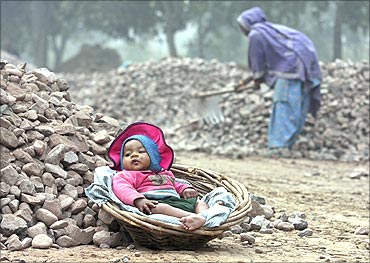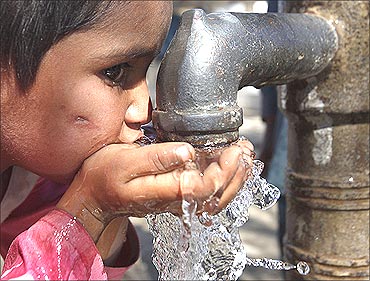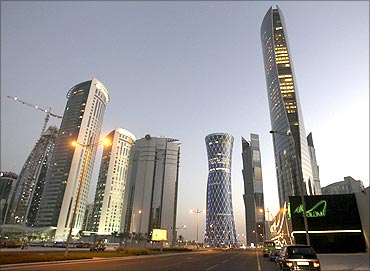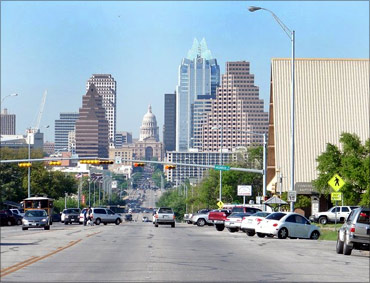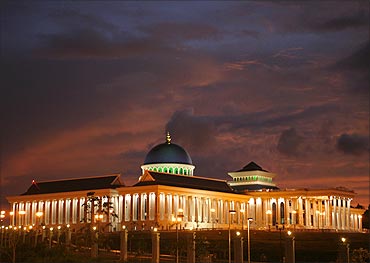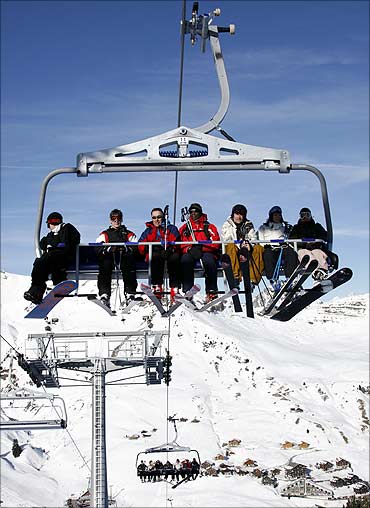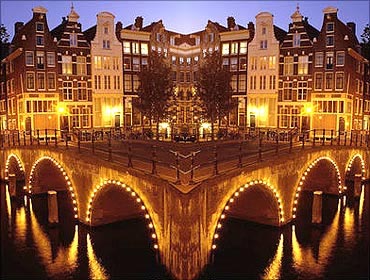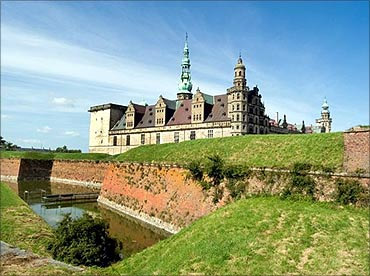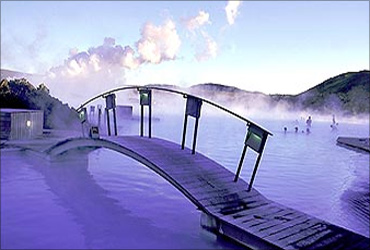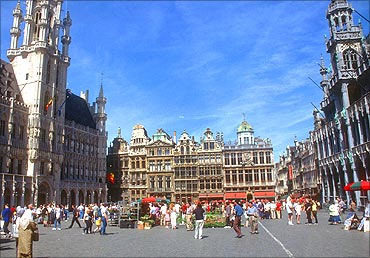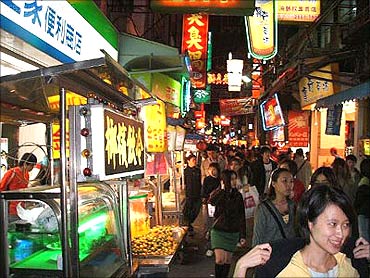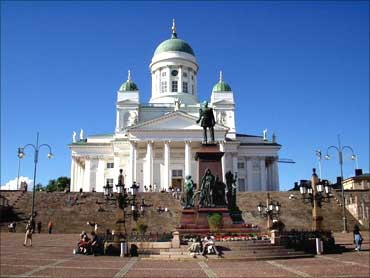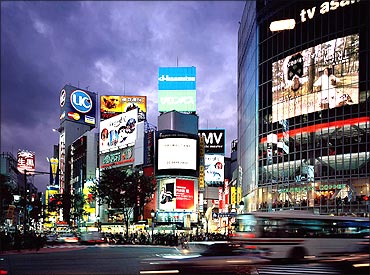 | « Back to article | Print this article |
Top 25 nations with the highest per capita income
India ranks a pitiable 127th in per capita income. And that, despite the fact that the per capita income of Indians grew by 14.5 per cent to Rs 46,492 in 2009-10 from Rs 40,605 in the year-ago period, as per the revised data released by the government on Monday, January 31.
The new per capita income figure estimates on current market prices is over Rs 2,000 more than the previous estimate of Rs 44,345 calculated by the Central Statistical Organisation.
Per capita income means earnings of each Indian if the national income is evenly divided among the country's population at 117 crore (1.17 billion).
However, the increase in per capita income was only about 6 per cent in 2009-10 if it is calculated on the prices of 2004-05 prices, which is a better way of comparison and broadly factors inflation.
Per capita income (at 2004-05 prices) stood at Rs 33,731 in FY10 against Rs 31,801 in the previous year, the latest data on national income said.
So which nations have the highest per capita income and how do India's neighbours like China and Pakistan fare?
Click NEXT to read on about the latest data from the International Monetary Fund on this . . .
Top 25 nations with the highest per capita income
China is the world's second largest economy, with its GDP standing at slightly more than $7 trillion.
China is ranked 93rd in terms of per capita income.
China, the world's factory, has a highly developed manufacturing sector. The country also has a very well developed telecommunications market, apart from robust agricultural and industrial sectors.Meanwhile, Hong Kong's per capita income stands at $45,277.
Click NEXT to read on . . .
Top 25 nations with the highest per capita income
Pakistan is ranked at 133 in terms of per capita income in a list of 182 nations.
GDP growth was steady during the mid-2000s at a rate of 7 per cent. It slowed down during the economic crisis of 2008 to 4.7 per cent. A large inflation rate of 24.4% and a low savings rate have curtailed the country's growth. Agriculture, services, telecommunications, software, automotives and textiles, contribute to the GDP growth. Click NEXT to find out the top 25 nations in per capita incomeClick NEXT to read on . . .
Top 25 nations with the highest per capita income
The nation's economy mainly depends on its huge oil and natural gas reserves. There is no income tax in Qatar.
Qatar has the world's third largest gas reserves. The country has experienced rapid economic growth over the last several years on the back of high oil prices.Click NEXT to read on . . .
Top 25 nations with the highest per capita income
The nation has highly developed industrial and financial sectors.
Luxembourg, one of the world's richest cities offers higher salaries. On an average, workers in Western European cities receive more than three times the pay of their colleagues in Eastern Europe.
Click NEXT to read on
Top 25 nations with the highest per capita income
Singapore has claimed the title of fastest-growing economy in the world, with a GDP growth of 17.9 per cent in the first half of 2010.
Singapore has the best quality of life in Asia and eleventh in the world, as per the Economist Intelligence Unit. The country has the world's ninth largest foreign reserves.Click NEXT to read on
Top 25 nations with the highest per capita income
Norway has a mixed economy of state-owned businesses and a robust free market.
It's a highly developed and an industrialised state. Fishing, petroleum, hydel power, minerals contribute heavily to the nation's GDP. Norwegians topped the UN's annual rankings of global wealth, health and education for the 8th time in 2010.Click NEXT to read on
Top 25 nations with the highest per capita income
Brunei, a sovereign state located on the north coast of the island of Borneo, in Southeast Asia is ranked second in the Human Development Index among the South East Asian nations after Singapore.
The country rich in oil and gas reserves has one of the highest standards of living in the world.Click NEXT to read on
Top 25 nations with the highest per capita income
The world largest economy, United States has a capitalist mixed economy, with abundant natural resources, a well-developed infrastructure and high productivity.
According to the International Monetary Fund, the US GDP of $14.4 trillion, constitutes 24 per cent of the gross world product at market exchange rates and almost 21 per cent of the gross world product at purchasing power parity (PPP). The country has highly developed sectors, like banking, financial services, automobile, agriculture, manufacturing, energy, etc.Click NEXT to read on
Top 25 nations with the highest per capita income
Click NEXT to read on
Top 25 nations with the highest per capita income
The Netherlands is the world's 16th largest economy, which is mostly driven by manufacturing, tourism, and services.
The Netherlands is a founding member of the European Union, the OECD and the World Trade Organization.
Click NEXT to read on
Top 25 nations with the highest per capita income
Australia is the world's thirteenth largest economy and has the eleventh highest per capita GDP; higher than that of the United Kingdom, Germany, France, Canada and Japan.
Almost 68 per cent of the Australian economy is dominated by its service sector. It ranks high in Human Development Index and Prosperity Index.Click NEXT to read on
Top 25 nations with the highest per capita income
Austria is a highly industrialised nation with a strong labour movement. Tourism, industry and the services sector add to the nation's economy. Austria is one of the richest countries in the world, with a nominal per capita GDP of $43,723 (2010 est.).
The country was ranked 25th in the world in its Human Development Index. Austria has been a member of the United Nations since 1955.Click NEXT to read on
Top 25 nations with the highest per capita income
One of the world's highly developed countries, Canada has a diversified economy with abundant natural resources.
Canada, one of the world's top ten trading nations, scores high on economic freedom as well.Click NEXT to read on
Top 25 nations with the highest per capita income
Ireland has made rapid strides in the field of information technology. Construction, apart from agriculture, is an important part of the Irish economy.
The Irish economy has undergone sharp economic adjustments since late 2008 when its banking sector was hit by the global financial turmoil.
Ireland's overall levels of economic freedom remain high, sustained by such institutional strengths as strong protection of property rights, a low level of corruption, efficient business regulations, and competitive tax rates.Click NEXT to read on
Top 25 nations with the highest per capita income
The country has the world's fifth largest oil reserves. The Kuwait Stock Exchange, which has about 200 firms listed, is the second-largest stock exchange in the Arab world.
Petroleum and petroleum products now account for nearly 95 per cent of Kuwait's export revenues, and 80 per cent of government income.
Kuwait is regarded as one of the most economically developed countries in the Arab League.
Click NEXT to read on
Top 25 nations with the highest per capita income
14. Sweden: $37,775
Sweden has a very well developed industry in sectors like engineering, telecom, power, automobiles, pharmaceuticals, etc.
The nation's economy is heavily dependent on foreign trade. It also has a highly skilled work force.Click NEXT to read on
Top 25 nations with the highest per capita income
The United Arab Emirates has a highly developed economy, and a rich source of revenue in tourism and huge oil reserves.
It has the world's sixth-largest oil reserves and scores high in Human Development Index.
Click NEXT to read on
Top 25 nations with the highest per capita income
Denmark has a highly industrialised economy, with robust agricultural and corporate sectors.
Despite being one of the most competitive nations, it has a very weak financial regulatory system. Also, its labour laws are very lax and tilted heavily in favour of the employers.
Click NEXT to read on
Top 25 nations with the highest per capita income
Iceland has a robust power sector, which helps it to be a highly industrialised country. Iceland has a free market economy with relatively low taxes compared to other OECD countries.
Apart from manufacturing, the nation is also taking big strides in the fields of software generation, biotechnology, tourism, and financial services.
Click NEXT to read on
Top 25 nations with the highest per capita income
The Belgian open economy has used its well developed transport network, its highly industrial and commercial base to grow at a rapid pace.
Click NEXT to read on
Top 25 nations with the highest per capita income
Germany has the largest economy in Europe, the fourth-largest by nominal GDP in the world, and fifth by GDP in 2008.
The service sector contributes around 70 per cent of the total GDP, industry 29.1 per cent, and agriculture 0.9 per cent to the economy.
Click NEXT to read on
Top 25 nations with the highest per capita income
The UK is a developed country, with the world's sixth largest economy by nominal GDP and eighth largest economy by purchasing power parity.
UK has a partially regulated free market economy. It is the third largest in Europe after Germany and France.Click NEXT to read on
Top 25 nations with the highest per capita income
Taiwan's rapid economic growth has transformed it into an industrialised nation. One of the Four Asian Tigers, the economic rise is known as the Taiwan Miracle.
Taiwanese companies manufacture a large portion of the world's consumer electronics goods.Click NEXT to read on
Top 25 nations with the highest per capita income
Top 25 nations with the highest per capita income
France has the fifth largest economy in the world, behind United States, China, Japan and Germany.
France is a highly industrialised country with sectors like energy, telecommunications, aerospace, defence, engineering, and automobile production boosting its robust economy.After Germany, it is also Europe's largest economy. Tourism and agriculture too add to its economy.
Click NEXT to read on
Top 25 nations with the highest per capita income
Click NEXT to read on
Top 25 nations with the highest per capita income
South Korea, a presidential republic with sixteen administrative divisions is a developed country with a very high standard of living.
It is Asia's fourth largest economy and the world's 14th (nominal) or 12th (purchasing power parity) largest economy The economy is export-driven, with a large share of electronics, automobiles, ship building, machinery, petrochemicals and robotics.